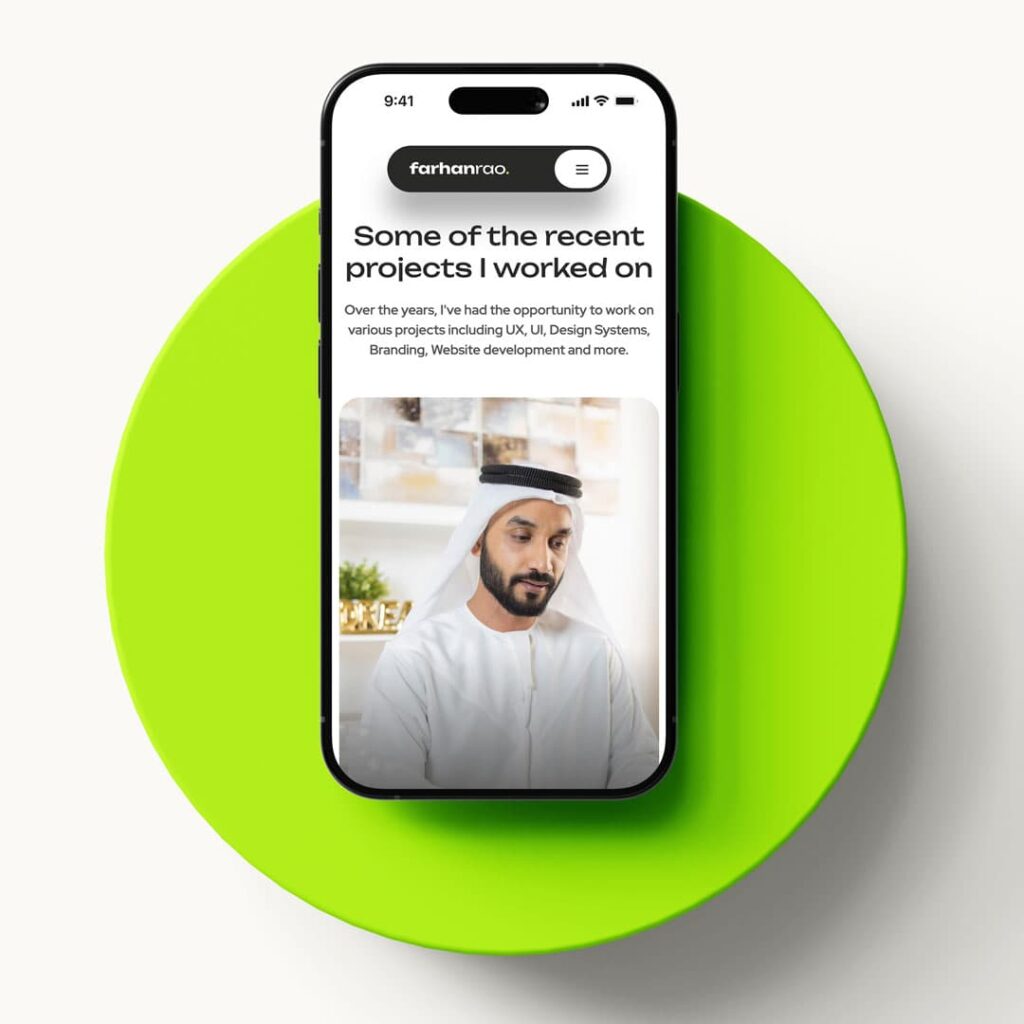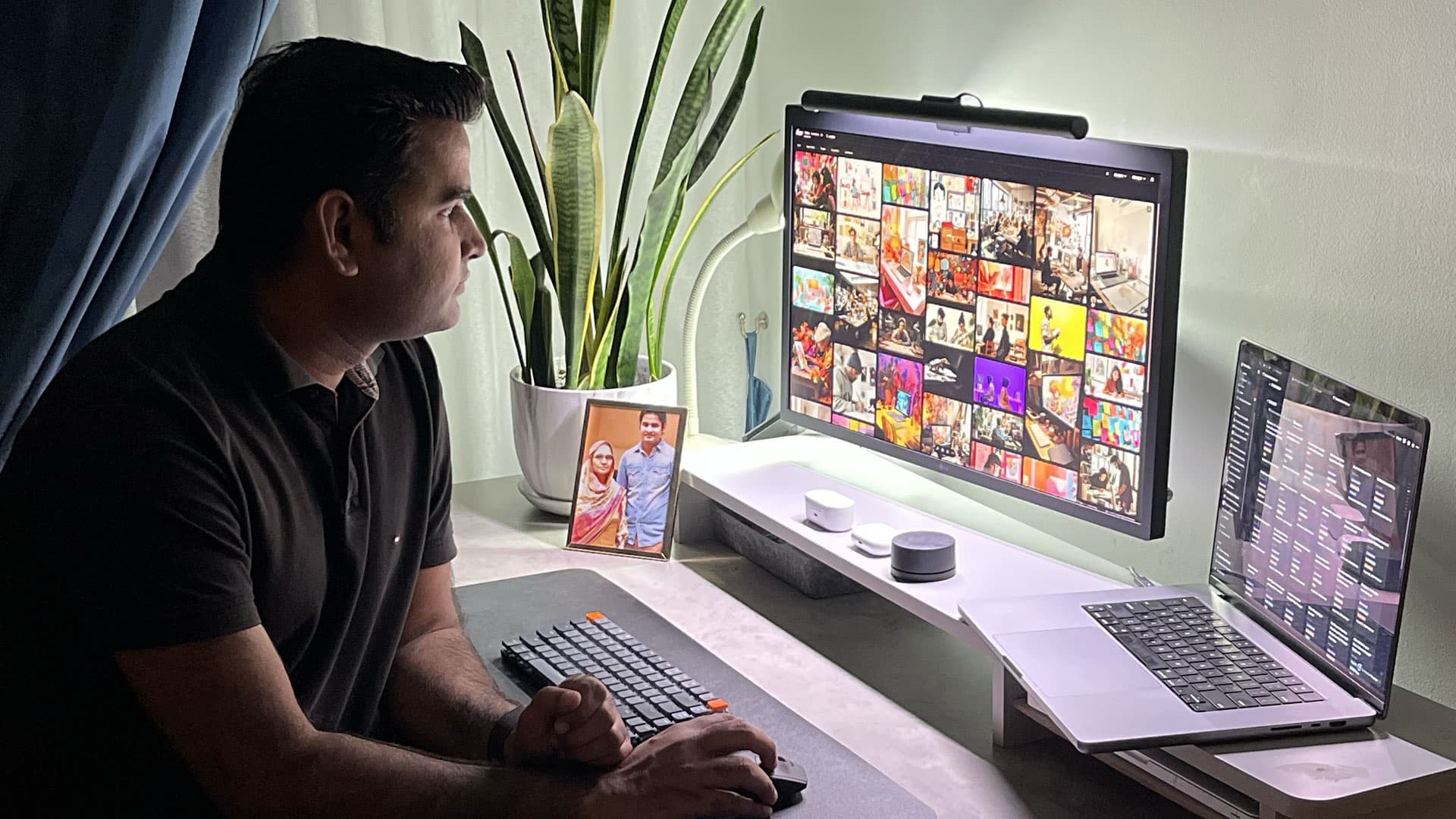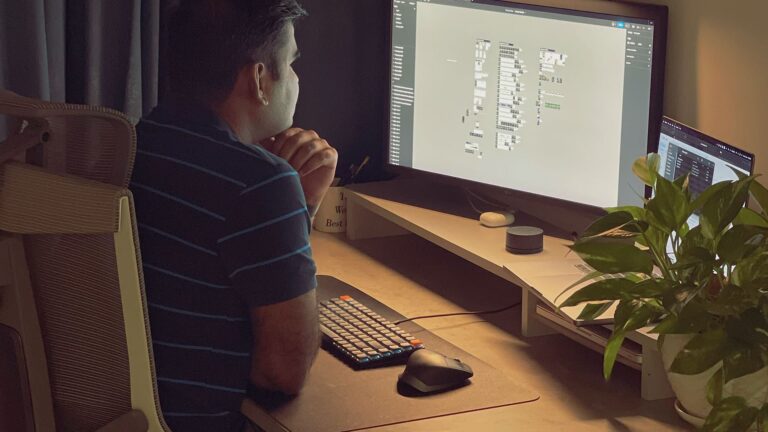It was 2 a.m., and the soft glow of my monitor illuminated empty tea cups scattered across my desk. I was tweaking pixels for the hundredth time, convinced that if I could just make this portfolio piece ‘perfect’, clients would come flooding in.
Sound familiar?
Portfolio paradox
For years, I operated under a common misconception in the design world: that exceptional work would speak for itself. Like many designers, I believed my portfolio was my voice.
But in today’s saturated digital landscape, I’ve learned that your design work is just the beginning of the conversation.
Reality check
According to a 2023 Upwork study, there are over 500,000 active designers on their platform alone. In this sea of talent, technical skills have become table stakes.
What truly sets designers apart isn’t just their mastery of tools – it’s their unique perspective and journey.
Finding your voice: Designer behind the designs
Think about your favorite designers on social media. What draws you to them? More often than not, it’s not just their work – it’s their:
- Authentic sharing of processes.
- Vulnerability in discussing challenges.
- Unique perspective on design problems.
- Personal growth journey.
As Stefan Sagmeister once said, “Style without content is just decoration.” The same applies to portfolios without personality.

The power of personal narrative
Research by Harvard Business Review shows that stories are 22 times more memorable than facts alone. When potential clients are choosing between equally talented designers, they often go with the one they feel they “know” better.
What to share
- Your design journey
- Early struggles with software
- Breakthrough moments
- Evolution of your style
- Behind-the-scenes insights
- Project challenges and solutions
- Decision-making processes
- Client collaboration stories
- Personal growth
- Skills development
- Business lessons learned
- Future aspirations
Practical steps to find and share your voice
- Document your process
- Keep a design journal
- Take screenshots of iterations
- Record video time-lapses
- Share regular updates
- Post work-in-progress shots
- Write about your design decisions
- Engage with community feedback
- Build authentic connections
- Respond to comments meaningfully
- Offer help to fellow designers
- Share both successes and failures

Common challenges and solutions
“I’m not good at writing”
- Start small with bullet points
- Use voice notes to capture thoughts
- Share primarily through video/audio if preferred
“I’m naturally private”
- Share professionally relevant stories
- Focus on work-related insights
- Maintain boundaries while being authentic
“I don’t have time”
- Batch create content
- Repurpose existing materials
- Set aside specific sharing times
The future of personal branding
As AI tools become more prevalent in design, your personal brand and unique perspective become even more valuable. The future belongs to designers who can blend technical expertise with authentic storytelling.
Next steps:
- Review your current online presence
- Identify three unique aspects of your design journey
- Create a content calendar for sharing
- Start documenting your process
- Engage with your design community
Remember, as Paula Scher wisely noted, “It took me a few seconds to draw it, but it took me 34 years to learn how to draw it in a few seconds.” Your journey is just as valuable as your output.
Your portfolio showcases what you can do, but your story shows who you are. Start sharing yours today.








